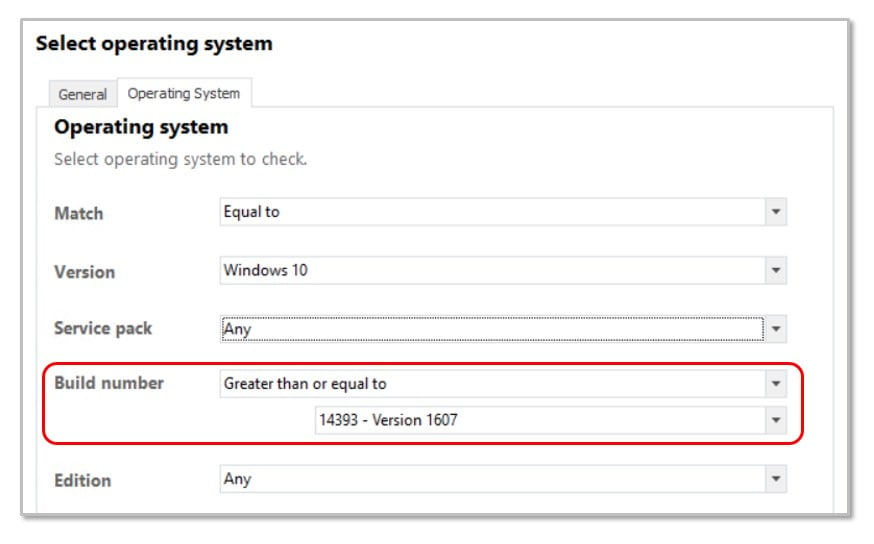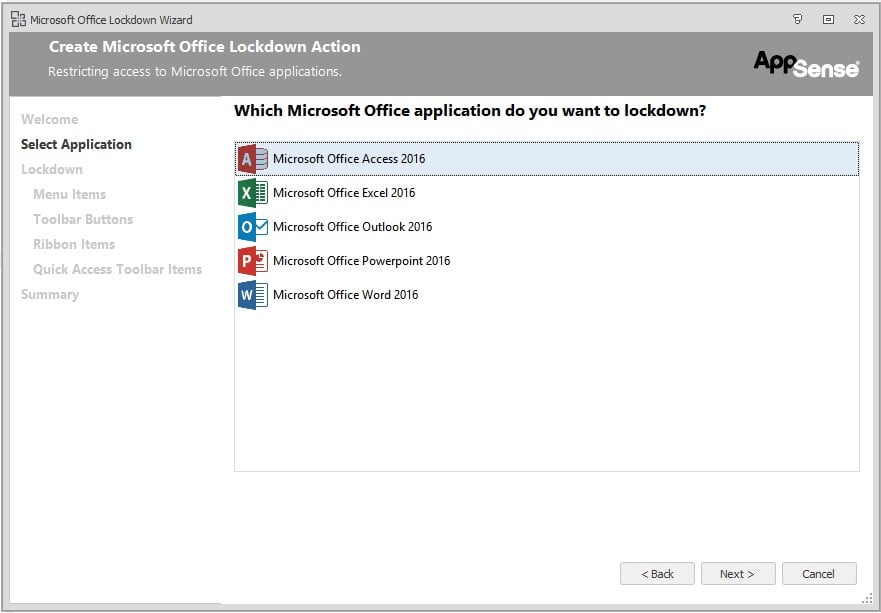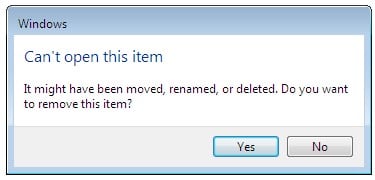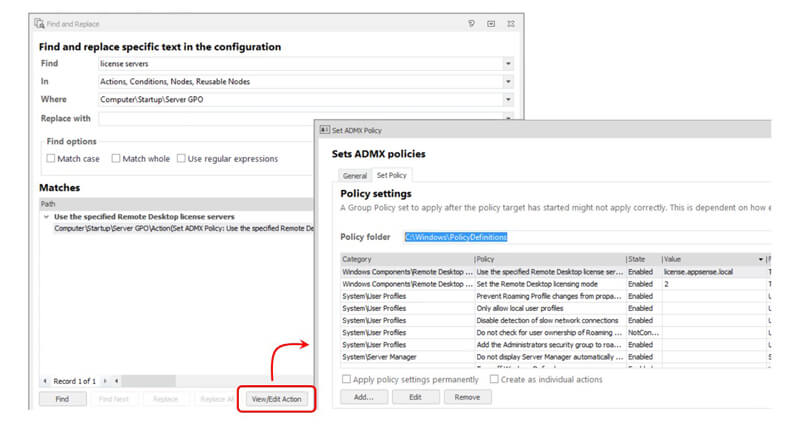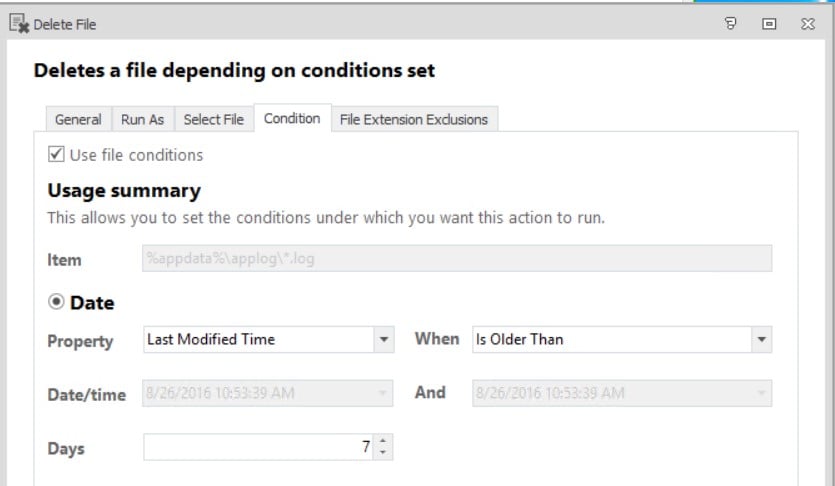Introducing AppSense Environment Manager 10.1
*This post originally appeared on the AppSense blog prior to the rebrand in January 2017, when AppSense, LANDESK, Shavlik, Wavelink, and HEAT Software merged under the new name Ivanti.
It seems like yesterday that we unveiled AppSense Environment Manager 10.0, and with it some ground-breaking changes in how we enable our customers to manage and optimize their users’ environments. Features like the Personalization Operations (PersOps) Console and Virtual Registry/File optimizations have transformed how we optimize applications and logon times and how our customers manage User Personalization data at scale. If you’re unaware of all this goodness, visit our v10 DesktopNow Help Portal to delve deeper into all the new v10.0 features at http://www.appsense.com/help
But, before we head into 2017, we have more great news to share with you. Environment Manager 10.1 is available for download NOW. That’s right! The best has just got better. I’m pleased to share how we have added great value in the following key areas.
Windows Server 2016/Windows 10 – Extended Functionality and Support
We regularly discuss the technical challenges ahead with our customers so we can ensure that Environment Manager accelerates their progress in an ever-changing IT landscape. One of our hottest topics is adoption of Windows 10 and Windows Server 2016. We listen to your feedback, and with the v10.1 release we are announcing the following enhancements:
In-Place Upgrade Support - You’re probably highly aware that Windows 10 will get two (or more!) ‘Feature Upgrades’ per year. More importantly, Microsoft will only patch the latest two Feature Upgrades on the Current Branch for Business Servicing model (for example, 1507 build is due to be dropped from support in March 2017).
This means deploying an ‘In-place’ Feature Upgrade will be become an ever more common occurrence (this is Microsoft’s preferred deployment method). So, we are happy to announce that beginning with v10.1, all our agents are fully compatible with in-place feature updates—without the need for extra reboots or restart of services.
Windows Server 2016 Support - Environment Manager 10.1 is fully supported on Windows Server 2016. Furthermore, we have updated our Out-of-the-Box (OOB) Windows Templates to include Windows Server 2016 configurations for personalization roaming.
Start Menu Personalization – Non-existent on Windows 8, then brought back under protest with Windows 8.1, the humble Start Menu is one of the most talked-about aspects of Windows 10. Such interest has even led to a history lesson courtesy of our own AppSense blog post (http://blog.appsense.com/2016/12/evolution-or-revolution-the-start-menu-in-modern-windows/) – expect a Netflix Original series by the end of the year!
Recently there’s been much debate around the Start Menu’s personality crisis. It’s become much more than a menu and is an application in its own right. With this change, vendors and customers have had to go to great and complex lengths in order manage Start Menu settings. So, with the v10.1 release, we are pleased to announce that you can rely on full OOB personalization of the Start Menu (on both Windows Server 2016 and Windows 10) with no additional configuration.
Windows 10/Windows Server 2016 Build Number Condition – As mentioned above, Windows 10 Feature Updates are to going to become a common occurrence in the Windows-as-a-Service world. Rolling out such upgrades and ensuring business continuity will be more and more challenging. The introduction of our new Build Number condition helps Administrators to ensure accurate policy control across their estate by specifying configuration settings to specific Windows 10/2016 versions (for example – 1607 is the July 2016 Anniversary Update).
View a video on Windows 10 Build Condition here.
Lock down Microsoft Office 2016 controls
While not strictly a Windows 10 feature, Office 365 is at the heart of Microsoft’s shift to cloud delivery and a continuous update model. Our Office lockdown wizard has long been utilized by admins to control specific aspects of the Menu, Toolbar and Ribbon functionality. Now you can apply this policy to control your Office 2016 deployments. Combined with our rich condition engine, you get really granular control – for example, if you want to lock down the Print option within Word 2016 when users are on the corporate network, you can with Environment Manager 10.1.
More comprehensive endpoint security - Office lockdown is both a security and a usability/productivity feature. AppSense Application Manager delivers security policy around application usage and user privilege. When used with Environment Manager, organizations benefit from more comprehensive endpoint controls that can be targeted with incredible granularity. For VDI and hosted desktops in particular, this combination allows efficient use of resources, eliminates the need for multiple disk images, and eliminates many security weaknesses.
View a video on Office 2016 lockdown here.
Powerful Enhancements to make you and your users’ lives easier
Enhanced Link Protection
One of the long-standing challenges of enabling the mobility of user settings is ensuring a consistent user experience across any environment where the user logs in. In the case of Citrix XenApp or Microsoft RDSH, servers run as application silos. Or, when roaming between desktops with different applications installed, it is possible that the user might have shortcuts on the task bar or desktop that link to applications that are not present on the local Windows system. The result of this is that, when moving between sessions, users can encounter the commonly phrased, dreaded ‘Ghost Icon’ usually accompanied by the following window:
With v10.1, customers using Personalization to persist Start Menu, Taskbar and Desktop links can benefit from enhanced protection in this scenario, ensuring that link files are only displayed for targets that are accessible from the device. And, this new benefit is available without any additional configuration!
And, yes, if the user roams back to a system with the application available, the appropriate link will reappear.
Updated Group Policy Action – Configuring your ADMX settings just got a whole lot easier
Based on customer feedback, we have treated our Group Policy settings editor to a makeover. It is also worth noting that we have added extra reporting data to our Configuration Profiler. Here are the details:
- Easily view enabled Group Policy settings and values, speed up logon times with our ‘Create as individual actions’ option, and configure a central GPO location to ensure consistency for your IT admins.
- Need to find a setting to make a change, but cannot remember where it is configured? Use our New Find/View Action option and quickly jump to where you need to be:
View a video on the Group Policy Action enhancements here.
Extended control for File/Folder Deletions
It is a common problem that admins find certain application cache/log locations (APP-V cache for example) grow to an unmanageable size over time. Historically, you may have had to set up Scheduled Tasks or Custom Scripts to manage this data. Environment Manager 10.1 is a new, simple option to manage such locations based on an ‘Older than N days’ condition. Wish to clean up a cache location on a weekly basis? Configure an EM Policy action with a condition to only remove files older than 7 days — simple!
View a video on file/folder enhancements here.
Configure Wildcard Inclusions for Windows Settings Group
Windows Personalization is the perfect tool for saving user settings that need to be accessed by both applications and the operating system. Beginning with v10.1, you can now configure wildcard settings for both Inclusions and Exclusions, which allows you to exercise detailed, granular control over the settings that you personalize.
For example, you may only need to roam INI files within a specific folder, but the actual INI file name is randomised. In Environment Manager 10.1, simply configure an inclusion for *.ini within that folder to save personalizing excessive files/folders within your database.
View a video on configuring wildcard inclusions here.
Personalization Operations Localization Support
We are pleased to announce that German, French and Dutch localization is fully supported within the PersOps Console. In 2017, we’ll expand localization enhancements to include the Endpoint Self Service Tool (ESST). Here is the PersOps console in French:
We’re sure you will agree that the above updates are welcome additions to the product. But it doesn’t stop there! What’s listed above are just the highlights. To review all the feature and service updates in this latest instalment, please read the EM v10.1 release notes that are available via the Support Portal.


